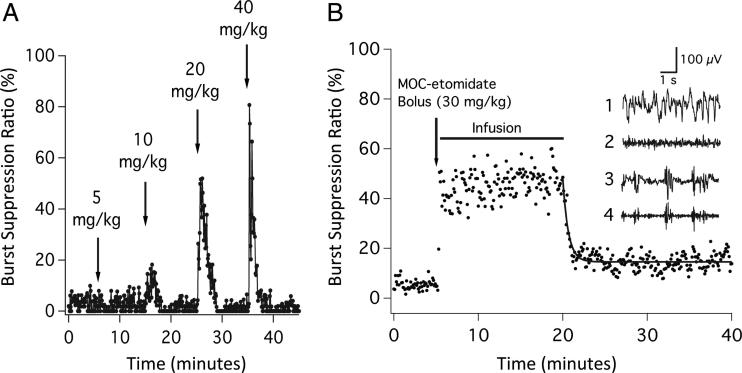Fig. 3.
(A) The effect of escalating bolus doses of methoxycarbonyl (MOC) etomidate on the burst suppression ratio in a rat. The MOC etomidate doses represent one, two, four, and eight times the ED50 for loss of righting reflexes in rats. Each bolus was given over 6 s, and the burst suppression ratio was calculated from the time-differentiated electroencephalogram. (B) Mean burst suppression ratio during each 6 s epoch recorded from five rats on administration of an MOC etomidate bolus (30 mg/kg), followed by a 15 min closed-loop infusion with the target burst suppression ratio of 40%. The curve is an exponential fit of the postinfusion data. Inset1: Representative baseline raw electroencephalogram obtained from an individual rat before the administration of MOC etomidate.2 Corresponding baseline time-differentiated electroencephalogram before the administration of MOC etomidate.3 Representative raw electroencephalogram obtained from the same rat during closed-loop infusion of MOC etomidate.4 Corresponding time-differentiated electroencephalogram during the MOC etomidate infusion. Each data point represents the burst suppression ratio during a 6 s epoch. All measurements were performed in the presence of inhaled isoflurane, 1%.

